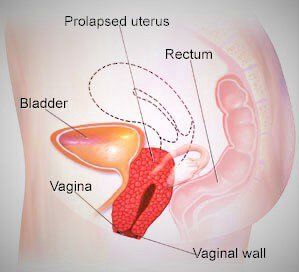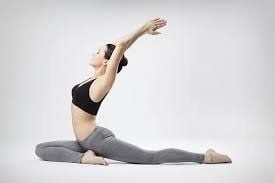This is an automatically translated article.
Aerobic exercise after giving birth can help you feel the fastest recovery. However, you should weigh the benefits of exercise after pregnancy, along with ways to stay motivated. Follow the tips below to safely begin aerobic exercise after childbirth.
1. The benefits of exercise after giving birth
Regular exercise after pregnancy can:
Strengthen and tone the abdominal muscles Increase energy Prevent postpartum depression Promote good sleep Reduce stress Promote weight loss get in shape, especially especially when you combine it with reduced calorie intake Improves your heart health. Best of all, keeping physical activity in your daily routine helps you set a positive example for your child now and in the years to come.
Moderate exercise is not thought to affect the amount or composition of breast milk or the baby's development. Some research suggests that intense exercise can cause lactic acid to build up in breast milk and create a sour taste that babies may not like, but this is rare.
If vigorous exercise is a priority during the first few months of breastfeeding, consider feeding your baby pre-workout or pumping before exercise and giving your baby pumped breast milk afterward. Also, exercise first and then take a bath, express a few milliliters of breast milk, and after half an hour or an hour feed the baby.
Trắc nghiệm: Những điều cần biết về kiêng cữ sau sinh
Sau sinh, cơ thể sản phụ sẽ có rất nhiều sự thay đổi, việc thực hiện tốt các kiêng cữ sau sinh và bổ sung đầy đủ các chất dinh dưỡng cho cơ thể sẽ giúp ích rất nhiều trong quá trình hồi phục sức khỏe. Bài trắc nghiệm dưới đây sẽ giúp mọi người có cái nhìn tổng quan về kiêng cữ sau sinh và thực hiện sao cho phù hợp nhất.The following content is prepared under supervision of Thạc sĩ, Bác sĩ y khoa, Tạ Quốc Bản , Sản phụ khoa , Khoa Sản phụ khoa - Bệnh viện Đa khoa Quốc tế Vinmec Phú Quốc
2. How long after giving birth, do aerobics?
If you had a healthy pregnancy and had a vaginal delivery, you can start exercising again after the birth of your baby. It's usually safe to start exercising after giving birth or as soon as you feel your body is ready. A mother recovering from a delivery, or cesarean section, will feel differently than a mother who has given birth vaginally.
If you've exercised regularly throughout your pregnancy and the delivery went smoothly, you can resume gentle exercise and stretching as soon as you feel you can.
However, keep in mind, Pregnancy and Lactation Hormones can affect your joints for several months after giving birth. So be careful not to do high-impact activities too soon.

3. When should I exercise caution?
In addition to Kegel exercises and light walking, you should exercise slowly if you :
Do not exercise regularly before or during pregnancy Have had assisted delivery Have complications during labor Caesarean pregnant. If you experience back or pelvic pain during pregnancy, talk to your GP or ask to see a physical therapist before you exercise. If you had a cesarean section, think about the first six weeks for your body to heal. Wait until after your postpartum checkup, between six and eight weeks, before exercising beyond Kegels and walking. Don't go swimming until you have had your postpartum checkup and have gone seven days without any bleeding or discharge (lochia). You are more likely to get infections from pool water while your uterus (womb) is still healing. You may have to wait longer if you had a cesarean section.
Doing a lot of abs or sitting when the pelvic floor is weak can make stress incontinence (urine leakage) worse instead of helping it.
Another reason to be cautious with your sitting position is that your abdominal wall muscles are stretched during pregnancy (abdominal separation) - Normally, the two longitudinal muscles in front of you tense out, creating a void. This separation can also lead to a bulge, usually below your navel. The size of the gap is different for each woman. But after giving birth, be careful with any exercise that puts you in a crunch. This can make the distance longer. Exercises may include sit-ups, planks, and straight leg raises.
Midwives can check your abdomen to see if you have postpartum illness. If this gap is the same after 10 weeks, your doctor will refer you to a women's health physiotherapist. Your physical therapist will show you exercises you can do to help with low back strain. It's best not to do high-impact aerobics, such as running or cardio, until your pelvic floor and joints have fully recovered from pregnancy and delivery. This process can take several months. If you have constant uncontrollable tension or a feeling of heaviness in your vagina, this could be a sign that you have pelvic floor damage. Don't strain your body with impact exercises and it's better to do exercises under the guidance of professional physiotherapists.
4. The goal of physical activity after birth.
For most healthy women, the U.S. Department of Health and Human Services recommends at least 150 minutes per week of moderate-intensity aerobic activity, preferably spread throughout the week, after pregnancy. Keep these guidelines in mind:
Take time to warm up and cool down Start slowly and gradually increase your pace, trying to maintain it for 20 - 30 minutes a day. Drink a lot of water. When you're just starting to exercise after giving birth, try simple postpartum exercises that strengthen major muscle groups, including your abs and back. Gradually add exercises of moderate intensity. Remember, even 10 minutes of exercise benefits your body. If you've exercised vigorously before getting pregnant or you're a competitive athlete, you may be able to exercise with intensity. Stop exercising if you feel pain.
Wear a supportive bra and a nursing pad if you are breastfeeding to prevent milk leaks. Stop exercising if you still feel pain.

5. The moves you should refer to
Start with gentle activities like walking every day. If you can, join a gym class to have more new relationships, and maybe exchange more experience raising children. With the approval of your obstetrician, you can start with movements like these:
Kegel exercises: Use this exercise to tone your pelvic floor muscles, support the uterus, bladder bladder, small intestine, and rectum. When practiced regularly, Kegel exercises can help reduce urinary and anal incontinence. Contract your pelvic floor muscles, as if you were trying to hold in midstream. Hold for up to 10 seconds and release, relaxing for 10 seconds between contractions. Aim for at least three 10 repetitions per day. Avoid Kegel exercises while urinating.
Diaphragm breathing: This is an exercise you can start in the first few days after giving birth. Taking a few minutes each day to focus on your breathing can help you relax and reduce stress. It can also improve core stability and slow your breathing. You can do this breathing exercise while sitting or lying down.
Pelvic tilt: Try the pelvic tilt a few times per day to strengthen the abs. Lie on your back on the floor, knees bent. Place your back on the floor by squeezing your abs and slightly arching your pelvis up. Hold for up to 10 seconds. Repeat five times and do up to 10 to 20 repetitions.
Joyful yoga: Your pelvic muscles can tighten and become painful after childbirth. This yoga pose can help relax and gently stretch muscles to relieve pain. Lie on your back and bring your knees toward your chest. Open knees slightly wider than hips. Keeping your arms on the inside of your knees, use your hands to hold the outsides of your feet or ankles. Bend your knee so that the bottom of the foot is facing up and gently pull the foot down to lower the knee to the surface. Focus on relaxing your pelvic muscles as you try to hold this position for about 90 seconds.
6. What do I need to prepare?
When you're ready for your workout, follow these steps:
Wear loose-fitting clothes to help your body relax If you're breastfeeding, feed or express your baby before Exercise to avoid any discomfort that may result from engorged breasts. Wear a bra that fits and offers plenty of support to protect your breasts. Have a bottle of water ready and drink enough before, during, and after your workout. When you're caring for a newborn, finding time to exercise can be a challenge. Hormonal changes can make you emotional, and some days you may feel too tired for a full-blown workout. But don't give up. Seek the support of your partner, family and friends. Schedule time for physical activity. Exercise with a friend to stay motivated. Put your baby in the stroller when you walk or lie next to you on the floor when you do abdominal exercises.
Exercising after pregnancy may not be easy - but it can do wonders for your health and give you the energy you need to take care of your newborn.
Please dial HOTLINE for more information or register for an appointment HERE. Download MyVinmec app to make appointments faster and to manage your bookings easily.
References: acog.org, mayoclinic.org, babycentre.co.uk, healthline.com













